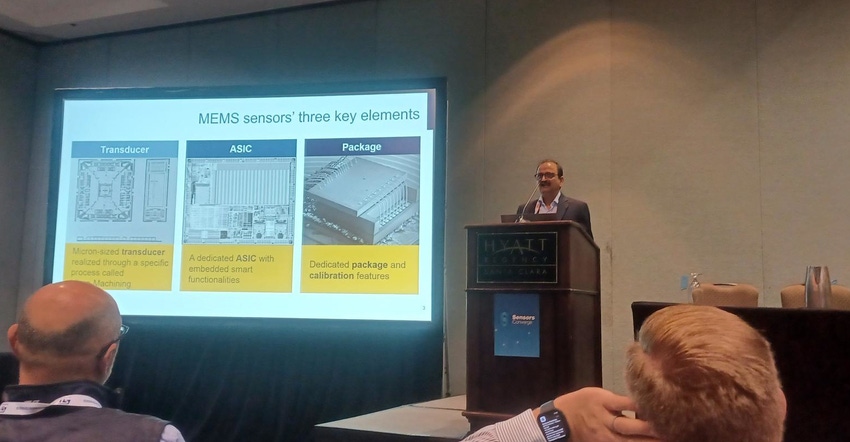Sensors Become Brains in the IoT of the Future
More sensors incorporating the ability to reason and make decisions as tech advances increase and IoT complexity grows.

For a long time, sensors have played the role of detecting specific information and sending it off to another processor for interpretation and further action. But technology advances will enable sensors to handle more of the processing either on-board or close to them in the future, according to Mahesh Chowdhary, Fellow and Senior Director for MEMS Software Solutions at STMicroelectronics.
Speaking during a presentation at Sensors Converge in Santa Clara, CA, Wednesday, Chowdhary said the trend towards more intelligent sensors was driven by faster processing and decision making at the edge of IoT networks, which would in turn reduce the reliance on central processors in cloud-based systems.
Chowdhary traced the history of MEMS (Micro Electro-Mechanical System) sensors, which comprise a suspended mass between a pair of capacitive plates. Long used in applications such as industrial and automotive, MEMS sensors have in recent years made significant reductions in parameters such as power consumption, noise, and overall size, while seeing an increase in full-scale range.
Higher Integration
According to Chowdhary, MEMS sensors are increasingly reaping the benefits of integrating an ASIC on board. The incorporation of machine learning capabilities now implements on-board functions such as wake-up, free fall detection, six degrees of freedom orientation, and fusion capability. There is no longer a need to send data into a separate processor to initiate these functions. This will become even important as future IoT networks become more sophisticated and the the advantages of having data processed not in the cloud but on the chip or edge become more crucial.
Power consumption is an important benefit that can be manifested in longer battery life for products the sensors are designed into, according to Chowdhary. In addition, there is the potential for more energy harvesting, which would further improve energy efficiency.
More Intelligence
As machine learning algorithms and artificial intelligence become even more prevalent in MEMS sensors, Chowdhary expects future MEMS sensors to be even more intelligent, as they become more aware of their environment, spatial context, and tasks. These sensors will be more cognizant of their location and be able to detect anomalies, and in turn be able to make more informed decisions on their own.
Spencer Chin is a Senior Editor for Design News covering the electronics beat. He has many years of experience covering developments in components, semiconductors, subsystems, power, and other facets of electronics from both a business/supply-chain and technology perspective. He can be reached at [email protected].
About the Author(s)
You May Also Like





